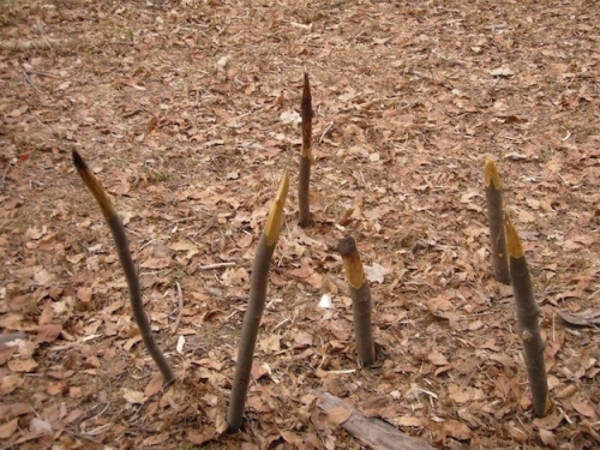Improvising a Survival Weapon
Every year, thousands of individuals will find themselves stranded in remote locations throughout the world. Unfortunately, most of these victims will have little or no experience in outdoor survival techniques. While the obvious priorities will revolve around finding an adequate supply of water, determining a means to affect rescue and avoiding personal injury, there may be situations in which one is forced to fashion a survival weapon for self-defence or hunting. So, let us examine some essential weapons that can be made solely from one’s possessions and what the surrounding environment may have to offer.

Personal Items
Assuming the lost individual is not a hunter who may possess a rifle, pistol or bow and arrow, many common outdoor items can be used to make a survival weapon. A canteen can be filled with sand and attached to rope; thus making an improvised device that utilises the power of leverage to swipe down at approaching animals. The ends of hiking poles can be sharpened to a point and provide a relatively effective stabbing weapon. Or, a rock can be attached to the end of these poles with cordage such as a shoelace. This can prove to be an extremely potent stone mace. Similarly, the radius of attack of a survival knife can be augmented by attaching it to the end of a stick or pole. Note that this is actually not recommended, as there is always a chance of losing the knife during an attack or defence. Above all, personal items that are used as a survival weapon against personal injury must be thought of as extensions of the body; their power enhanced by applying the simple laws of physics.
Environmental Offensive Weapons
Nearly every region in the world can offer various items that will serve as a potent survival weapon. It is a general rule of thumb that the most primitive tools tend to be the most effective. Never forget that spending a great deal of time and energy when fashioning a weapon will deplete valuable energy levels.
Sharpened Stick
The simplest survival weapon is a sharpened stick. Choose a branch that is pliable and that displays no outward signs of rotting. Test the branch by bending it between two trees or over your knee to make certain it will not snap. Utilise a knife, a sharp rock or even rub the end against a flat stone to sharpen one end to a point. Should you have a fire, hold the tip over the fire to temper the wood. This will help the point maintain its strength. This stick can be used for terrain defence as well as for spear fishing should a nearby body of water be present.
Fire as a Weapon
One of the most effective weapons is fire. While fire placed around the perimeter of a location can help warn predators and serve as a signal, fire attached to the end of a stick will thwart the large majority of all animals; even bears and aggressive land mammals. It is important to remember that certain substances such as birch bark contain natural resins that will burn for a long period of time. However, not everyone is adept enough to spot birch bark or they may find themselves in locations with little vegetation. A stick with a “Y”-shaped fork at one end can be used to scoop embers from a fire and toss at any potential predators. Although this may not be a deadly weapon, it is often times only necessary to scare an animal away as opposed to physically doing battle.
A Rock as a Weapon
As stated earlier, a rock attached to the end of a pliable, sturdy stick is extremely effective against even larger predators, it might not sound ideal but has worked for thousands of years as a survival weapon. A stick approximately the length of one’s arm can be useful in dealing with smaller predators such as snakes or hyena, while sticks over one metre with a rock on one end are preferable for dealing with larger adversaries such as bears or even lions. Never forget that the strength of these animals far outweighs the power of these devices, however most will be frightened away when viewing a human wielding such a device.
Always recall that most improvised weapons are designed for deterrence as opposed to physical confrontations. The majority of lost or stranded travellers are found within 72 hours. Thus, these weapons will serve more of a defensive nature designed to ward off predators until help arrives. With little effort and a bit of insight and clarity, a survival weapon can be improvised in a matter of minutes and may very well represent the first, last and only line of defence between survival and death.
About The Author
John Fegan is a freelance copywriter who writes for a variety of websites, including a number of personal injury solicitors in Manchester.
John Fegan’s Google + Profile






Lots of this makes perfect sense to me and a nice sharp stick is a really good spear. I killed a deer with one once when I was camping with some friends it really helpped me out.